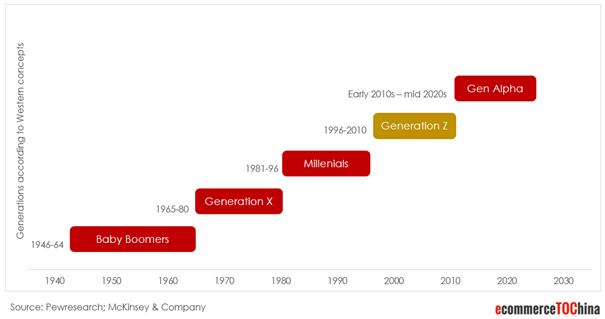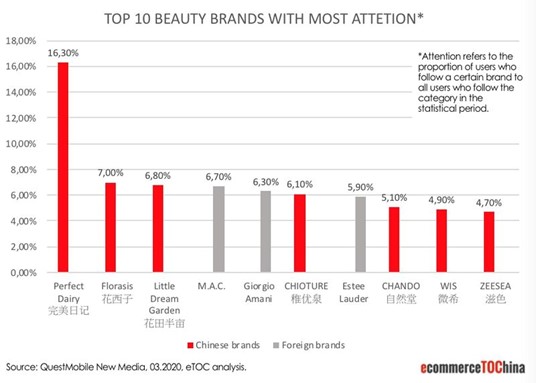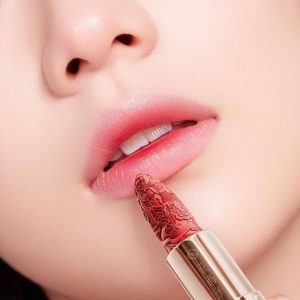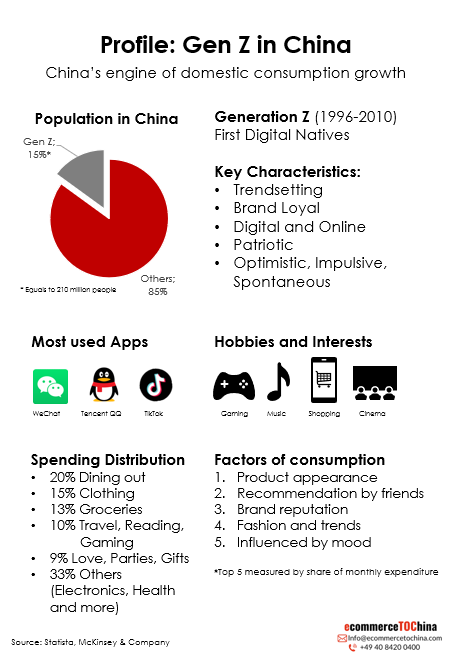Gen Z in China
GenZ is the future core proponent of China’s domestic consumption!
Who is Gen Z? What makes the Chinese Gen Z so special? What do marketers need to know to win GenZ in China?
1. Who is Gen Z?
Generation Z (Gen Z) refers to people born between around 1997 and 2012. This time span can slightly vary depending on the definition and continent. In Asia, for example, the period between 1996 and 2010 is referred to as Generation Z. By 2025, GenZ will account for a quarter of Asia’s total population.

2. Gen Z in China
Based on the above-mentioned definition, Generation Z in China are therefore mainly young people between the ages of 12 and 26 (as of 2022). China’s Gen Z grew up in the midst of the nation’s economic awakening. The fastest sustained expansion of a major economy in history in fact.
Thus, they tend to take rapid improvements in standards of living for granted. They are also China’s first generation of digital natives, and as such are instinctively familiar with technology as a form of communication and entertainment, and as an enabler of commerce. Dealing with the smartphone and other digital devices is commonplace.
This unique background sets China’s Gen Z apart from other generations in the domestic and foreign markets alike.
According to QuestMobile, around 320 million Gen Z use the smartphone around six hours per day to surf on the internet.
So, in what ways do China’s Gen Z standout?
Chinese GenZ are called to be culturally confident and are proud of their heritage.
The term “Guochao 国潮” means “Made in China” and that is precisely the trend among Gen Z and the Millennials. They grew up during a period in which the quality of Chinese products has significantly improved. “Guo Huo国货” (Chinese domestic products) is undoubtedly one of the new trends in Chinese e-commerce.
Domestic products are especially popular in the cosmetics sector. Among the top 100 brands most popular with Chinese consumers, 37 Chinese brands are listed. 7 of the Top 10 brands are domestic, and Perfect Diary topped the list with a massive lead (graphic below).

This return to traditional roots is a part of the found new confidence in national identity and traditional culture. Guochao combines both traditional Chinese elements and modern, contemporary fashion trends.
While only 38% of consumers searched for domestic brands on Baidu in 2009, this figure has already reached 70% by 2019 (McKinsey & Company 2021) There are now more companies adapting to the trend and repositioning their brand.
The image of “Made in China” has become something that young Chinese people wear with pride. This new East Asian modernity honors tradition and culture.
Similar to guochao is the term “China chic”. Such products contain traditional Chinese elements. A patriotic feeling is part of the purchase of these products.

Despite the trend and the increasing demand for domestic, patriotic products, the majority of Gen Z consumers are also interested in overseas fashion brands. They need to tailor their concept to the Chinese market and adapt to the corresponding needs.
3. Six after-pandemic trends of GenZ:
(1) OPTIMISTIC, IMPULSIVE & OUTSPENDING
Gen Z remains spontaneous and buys products “on the go.” The belief in a high future salary leads them to sometimes overspend their current budget – they are very open to the concept of credit. Some even refer themselves to “the moonlight clan”, which basically means to live from paycheck to paycheck.
(2) INDIVIDUAL & UNIQUE
Off-the-peg clothing is out. More than half of all Chinese Gen Z consumers prefer customized products, or even tailored made products. Uniqueness and individualism are essential!
(3) LOYALTY
Once they find a brand they like, the majority will develop a strong sense of brand loyalty.
(4) OMNICHANNEL SHOPPING
Both online and offline shopping remain important to Chinese Gen Z. A large proportion of these young consumers browse in-store, and try out styles and size, but will later make the purchase online.
(5) PREFER E-COMMERCE PLATFORMS
E-commerce platforms like Taobao and others are still the most convenient channel for Chinese Gen Z. Other social commerce experiences like WeiShang are also on the rise, but Taobao and co are more transparent and assure higher quality.
(6) WORD-OF-MOUTH MATTERS, ESPECIALLY ON SOCIAL MEDIA
For Gen Z, social media is the most important source of information. Traditional word-of-mouth is becoming less important as key opinion leaders drive the latest trends online.
4. What do brands need to know to win Gen Z in China?
Needless to say, brands need to carefully analyze Chinese Gen Z and keep up with them. On the one hand, trends are changing, and on the other, Gen Z-ers are also getting older. Companies have to adapt accordingly and revise their strategies. What does that mean exactly?
While Gen Z mostly buys spontaneously, they still keep loyal to a brand. Therefore brand proposition has to be tailored and personalized to reach out to the customers. Of course, young consumers want to be reached and addressed online. Nevertheless, the mix between off- and online is crucial. Certain experiences cannot be offered on the internet, such as product testing or special activities related to the brand. Digital platforms such as WeChat or Xiaohongshu are indispensable, as are the popular e-commerce platforms JD or Tmall.
However, mere presence on the aforementioned platforms is not enough. The right influencers are necessary to increase reach, generate attention and convey the brand’s values accordingly. A product recommendation by the right influencer makes the origin of the brand fade into the background and can immediately create trust in the product.
Lastly, brand transparency is important since Gen Z-ers are choosing brand that represent their values and use them to express their individuality. Many topics that used to be of less interest in China now play an important role, especially among the younger generation. Data protection, environmental protection or health should be taken into account and communicated openly and proactively.
It is clear that Generation Z cannot be dismissed as a single target group. Due to the sheer number of over 210 million people, it is not possible to generalize the group, making a “one-size-fits-all approach” impossible. It is all the more important to consider the above points and develop a strategic orientation.


Discover the Future of Shopping with "Shopatainment – The Future of Shopping"
Our new book “Shopatainment – The Future of Shopping” explores how the innovative fusion of shopping and entertainment is revolutionizing the way we shop. Learn about the origins of this trend in China, the technologies and formats being used, and the opportunities and challenges it presents for the West.

Want to have a first free consultation session about how to do marketing in China? Contact us.
